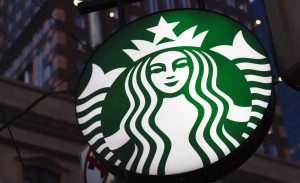 Workers at three Starbucks stores in upstate New York have filed paperwork to organize, which if successful would mark the first successful union drive in the coffee chain’s history. The group, which calls itself Starbucks Workers United, is representing about 70 employees in the Buffalo region. The group is asking the National Labor Relations Board to consider its unionization push and hopes to join an affiliate of the Service Employees International Union.
Workers at three Starbucks stores in upstate New York have filed paperwork to organize, which if successful would mark the first successful union drive in the coffee chain’s history. The group, which calls itself Starbucks Workers United, is representing about 70 employees in the Buffalo region. The group is asking the National Labor Relations Board to consider its unionization push and hopes to join an affiliate of the Service Employees International Union.
The unionization effort began last month when Starbucks Workers United sent a letter to CEO Kevin Johnson notifying him that it had formed an organizing committee. Workers at the stores in New York say they want a seat at the bargaining table and have complained of a lack of training, pay, understaffing, and stressful working conditions as factors in organizing the push.
“We are forming a union to bring out the best in all of us. … Many of us have invested years of our lives in Starbucks, while others have recently become partners. We all have one thing in common —we want the company to succeed and we want our work lives to be the best they can be,” the letter read.
Starbucks is pushing back on the effort during a hearing with the NLRB this week. The coffee giant, which has more than 30,000 locations, is arguing that the small group of stores shouldn’t have the right to organize without other stores in the region.
Starbucks attorney Alan Model told the board that because of similarities between the locations in the Buffalo market, all 20 stores should be included in any unionization vote. That complicates things for Starbucks Workers United, which would have to get majority support for the drive from scores of more workers if Starbucks succeeds in its efforts.
Employees at the stores involved hope to use the tight labor market, which is experiencing shortages of workers, as leverage against the company. Across the United States, employers have had to raise wages, offer better benefits, and even provide signing bonuses to attract workers. The phenomenon came as the U.S. emerged from the coronavirus pandemic, and economists are split on the reasons behind it.
Because Starbucks can’t afford to lose workers, the employees at the Buffalo stores feel as though they are not as expendable as before and are seeking to use that position to their advantage.
“Starbucks likes to say they don’t consider us employees, they consider us ‘partners,’ but we have no power in that partnership,” said Jaz Brisack, who works in one of the involved stores. “But if we can build actual worker power for baristas, then we can change not just Starbucks and make it the best it can be, but help make the whole services industry better.”
Starbucks has faced employees attempting to unionize in the past. In 2004, another effort in New York failed after Starbucks challenged the move before the NLRB. It is still to be seen if Starbucks Workers United will succeed, and no date for a vote has been scheduled.
The Washington Examiner reached out to Starbucks for comment on the labor drive but didn’t immediately receive a response.
The effort comes after a spate of other unionization drives amid the pandemic. Perhaps the most high-profile attempt to organize was at an Amazon fulfillment center in Bessemer, Alabama. The 6,000-employee warehouse drew national headlines for its effort, which attracted the support of heavy hitters such as Sens. Marco Rubio of Florida, a Republican, and Bernie Sanders of Vermont, an independent socialist.
Amazon hit back hard, holding meetings to discourage workers, plastering the walls of the facility with anti-union flyers, and inundating workers with calls and text messages. The Amazon employees’ attempt to join the Retail, Wholesale, and Department Store Union failed after a seven-week vote.
Read the original article here.



